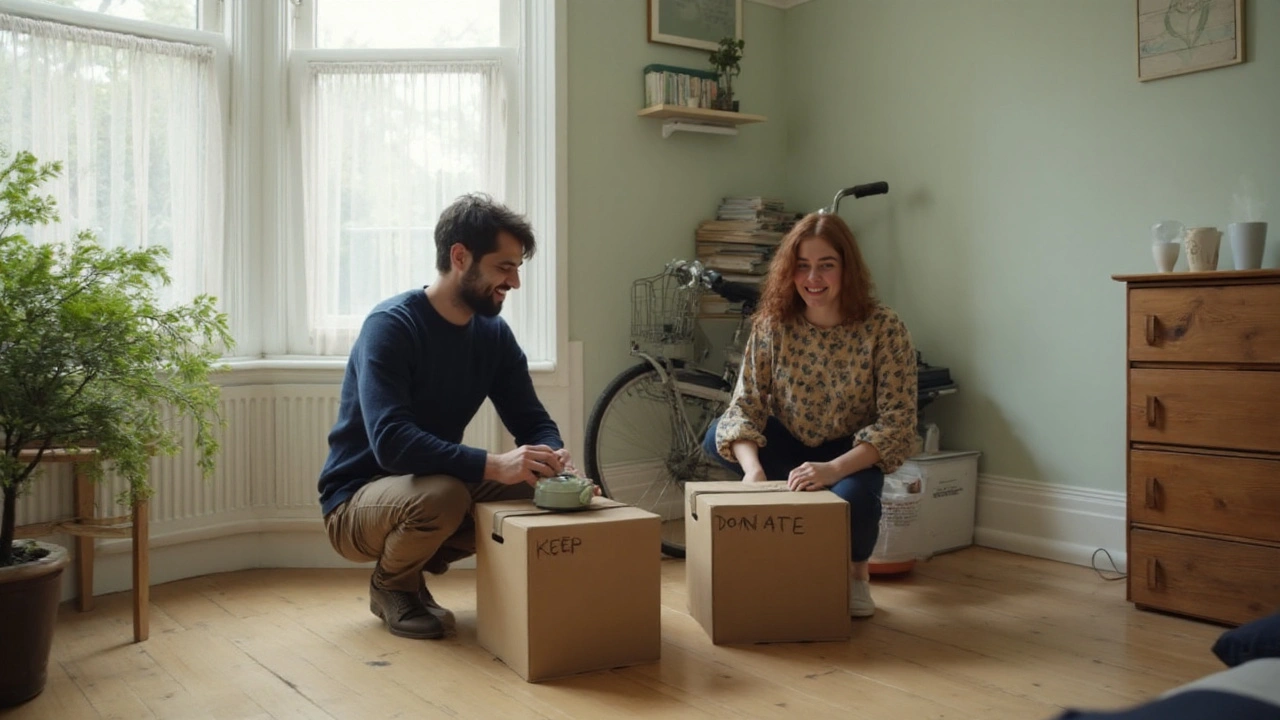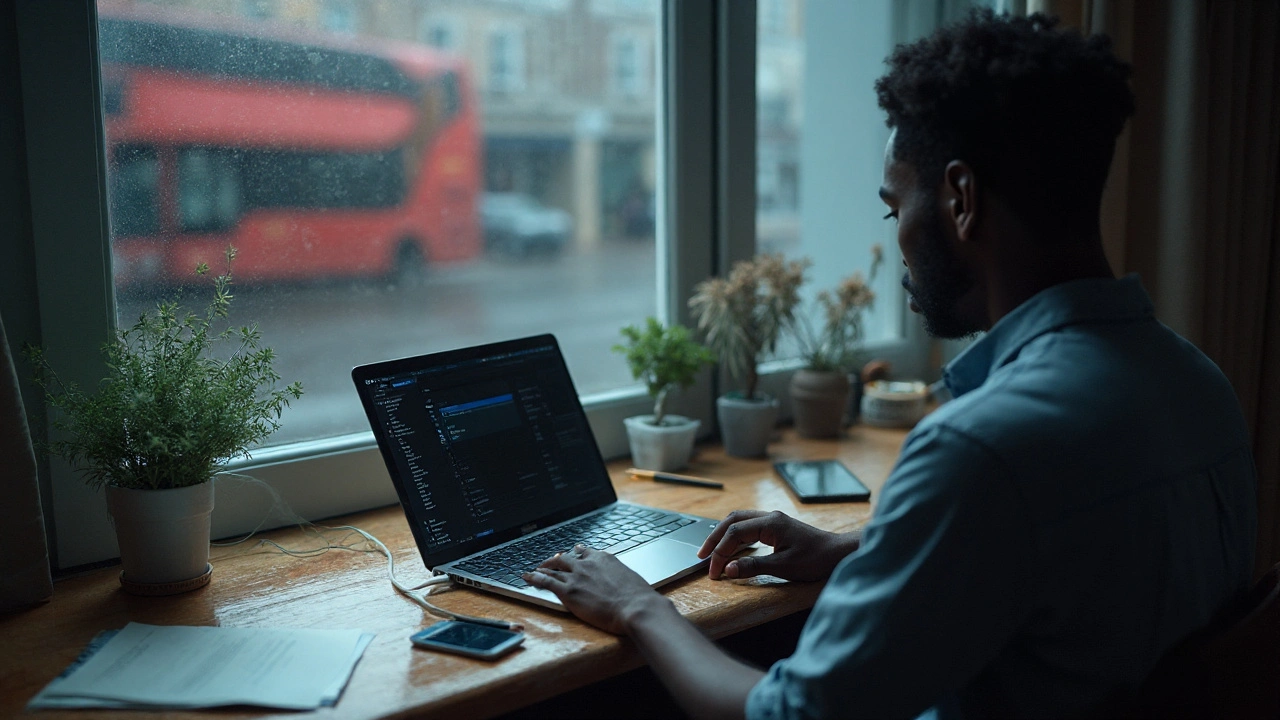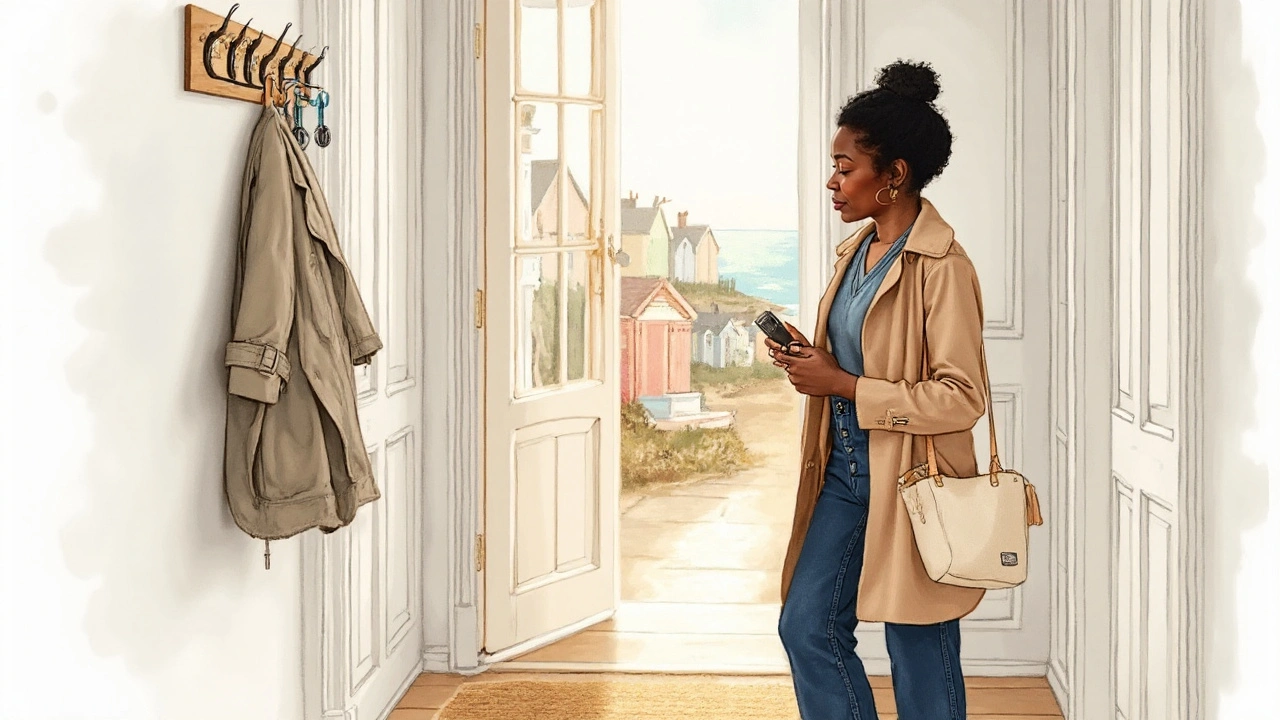Minimalism Guide: Declutter, Simplify, and Make Room for What Matters
 Sep, 8 2025
Sep, 8 2025
You want space-physical, mental, calendar space-to breathe and actually enjoy the life you’ve built. The snag? Your home is full, your to-do list is fuller, and your brain feels like 38 browser tabs at once. This guide shows you how to cut the noise and make room for the stuff that truly counts. Not by throwing everything out, but by setting rules that help you choose once and benefit daily.
Realistic promise? You’ll walk away with a clear plan: what to keep, what to release, and how to stop the backslide. Expect practical steps, checklists, examples from everyday rooms, and answers to the messy bits-kids’ art, gifts from family, and the “I paid good money for this” problem.
Minimalism That Works: TL;DR, Mindset, and Quick Wins
TL;DR
- Minimalism isn’t about owning nothing; it’s about removing what blocks your best life. Start with one room and one rule.
- Use simple tests: used in the last 90 days or needed in the next 90? If not, it goes.
- Contain, don’t spread: give each category a fixed “container” (one bookshelf, one toy bin). When it’s full, something exits before something enters.
- Build a protection plan: 1-in-1-out, a 24-hour pause before buying, and a weekly 10-minute reset.
- Expect feelings. Keep a “maybe box” for 30 days. If you don’t miss the items, you’re done.
What this is, and what it isn’t
- This is about choosing what earns space in your home, calendar, and head. That might be fewer clothes and more morning walks. Fewer apps and more sleep.
- This is not a beige-aesthetic contest or a strict number of possessions. If your surfboard or sewing machine gets used and loved, it stays.
Quick evidence check
- Visual clutter competes for your attention. Studies from the Princeton Neuroscience Institute show that multiple stimuli in your visual field reduce focus and increase cognitive load.
- People report more lasting happiness from experiences than from things. Research led by Thomas Gilovich (Journal of Positive Psychology) has replicated this for years.
- Home clutter correlates with stress, especially for women managing family spaces (UCLA’s Center on Everyday Lives of Families observed this in real homes).
Why it matters today
- More stuff often means more cleaning, more decision fatigue, and more money spent managing items you don’t use.
- Less stuff means you can find your keys, spend weekends outside, and say yes to the things that light you up.
One sentence definition: minimalism is the practice of removing what distracts you so you can give your best time, money, and energy to what matters most.
Quick wins (15-20 minutes each)
- Clear “the landing strip”: the first flat surface you see when you get home.
- Empty one bag or drawer entirely. Don’t shuffle. Decide and finish.
- Delete 50 emails by filtering newsletters and promos. Unsubscribe as you go.
- Remove five apps from your phone home screen. Keep only daily drivers.
- Pick one category that’s out of control (mugs, tote bags, cords) and cap it at a number that fits a single shelf or box.

Step-by-Step: Make Room for What Truly Matters
Job 1: Set the destination (15 minutes)
- Write three sentences: What do you want more of? What do you want less of? How should your home support that? Example: “I want slow breakfasts with my kids, a 15-minute nightly reset, and a light calendar.”
- Choose one priority room that blocks that vision the most. Often it’s the kitchen, wardrobe, or office.
Job 2: Make a simple map
- Zones: Split the chosen space into 4-6 small zones (e.g., wardrobe: hanging, folded, shoes, accessories, sentimental).
- Time box: 30-60 minutes per zone. No marathon. Momentum beats drama.
- Five-box method: Keep (Here), Keep (Elsewhere), Donate/Sell, Recycle, Rubbish. Label boxes upfront.
Job 3: Clear surfaces first
- Start by clearing countertops and floors. Empty surfaces make the whole room feel calmer and give you a safe staging area.
- Put back only what you use daily. Everything else must earn its way back later.
Job 4: Use decisions, not willpower
Try these tested rules. Pick two that feel easy and stick with them:
- 90/90 rule: If you haven’t used it in 90 days and won’t need it in the next 90, it goes. Exceptions: seasonal gear, safety gear, tools.
- One-in, one-out: If something new comes in, something of the same category leaves. This trains the boundary.
- Container rule: The shelf, bin, or drawer is the limit. When it’s full, decide, don’t expand.
- “Would I buy this again for full price today?” If not, it’s only staying because of sunk cost.
- “Does this support the life I say I want?” If not, it’s lifestyle clutter.
Job 5: Handle the stoppers (money guilt, gifts, and sentimental)
- Money guilt: Price already paid = tuition for a lesson. Keep the lesson, not the item. If it’s new in box, sell now while the value’s higher.
- Gifts: Gratitude doesn’t equal lifetime storage. Keep the relationship, not the object. Take a photo, send a kind note, release the thing.
- Sentimental: Create one memory box per person (shoebox-sized for starters). Photograph bulky items (kids’ massive art, jerseys), keep the top 10 pieces, curate yearly.
Job 6: Run a Declutter Sprint (90 minutes)
- Pick one zone and empty it completely.
- Sort fast using your rules. Don’t overthink.
- Return only best-in-class items. Duplicate? Keep your favorite, let the rest go.
- Finish: Take donations to the boot of the car immediately. List sale items today with a single photo and a short, honest description.
Job 7: Store like a pro (without buying a heap of bins)
- Store where you use it. Tea near kettle, sunscreen near front door, toys near play area.
- File, don’t stack. Vertically fold clothes, file papers upright. Easier to see, easier to grab.
- Label once. Names on shelves and bins mean less decision fatigue for everyone.
- Fewer, larger zones beat dozens of tiny baskets. Less micromanaging, more flow.
Job 8: Protect with habits (the relapse shield)
- Daily: 10-minute reset after dinner. Family timer on. Music on. Everyone returns items to their zones.
- Weekly: One surface sweep (dining table, kitchen island). One category sweep (tote bags, receipts, water bottles).
- Monthly: 30-day “maybe box” review. If not missed, out it goes.
- Seasonal: Wardrobe edit at season change. Pantry edit with use-by check before big shops or holidays.
Decision tree (use when stuck)
- Does this get used weekly? Keep where it’s easy to grab.
- Used monthly/seasonally? Keep, but store higher or farther.
- Not used in 6-12 months? Donate/sell unless it fails the exception test (safety, tools, heirloom).
- Hesitating? Photo + maybe box for 30 days. Set a calendar reminder.
Apply minimalism beyond stuff
Digital:
- Home screen diet: One screen only. Dock = top 4 apps you use daily.
- Notifications: Off for everything except messages and calls from favorites.
- Inbox: Create three filters-Newsletters, Receipts, Social. Unsubscribe for 10 minutes a day this week.
- Cloud: One folder per life area. Name with verbs: Work-Send, Work-Archive, Home-To Pay, Home-Records.
Calendar:
- Before accepting, ask: “If this were tomorrow, would I still say yes?” If not, it’s a no.
- Protect white space. Block two weeknights as “nothing nights.” Treat them like appointments.
- Batch errands. One run, one list, once a week.
Money:
- Spending pause: 24 hours for under $100, 7 days for over $100.
- Pay for usage, not potential. If you won’t use it 10+ times this season, borrow or rent.
- Choose one budget lever to pull this month (subscriptions, impulse buys, fast fashion) and cut 25%.
Local, practical moves (Adelaide-friendly)
- Donation: Op shops like Salvos and Vinnies take quality items. Check condition guidelines and drop during open hours.
- Hard rubbish: Book your council’s hard waste collection for bulky items that can’t be reused.
- Earn-back: Sell quality pieces on local marketplaces. List quickly; price to move. The goal is space, not a perfect sale.
- 10c containers: Use the container refund scheme to turn cluttered bottles and cans into pocket money and a cleaner shed.
Pitfalls to avoid
- Buying storage to solve clutter. Edit first. Bins don’t fix too-muchness.
- Marathon sessions that leave you burnt out. Short sprints win.
- “Maybe later” piles. Decide once. Maybe box is the only exception-and it has a 30-day timer.
- Shuffling items between rooms. If you’re moving it, you’re not editing it.

Examples, Checklists, FAQs, and Next Steps
Real home examples (how this plays out)
Wardrobe (90 minutes)
- Empty it all onto the bed.
- Keep only what fits, flatters, and suits your actual week. If it’s itchy, tight, or “for when I lose 5 kg,” release it.
- Decide your starter uniform: 10-12 go-to pieces you actually wear-jeans you love, 2-3 tees, one jacket, one knit, one dressy top, sneakers, flats.
- File-fold into drawers; hang only what creases.
- Put a donation bag in the wardrobe. Add as you try things on and pass.
Kitchen (60-120 minutes)
- Surfaces first. Clear benches completely.
- One of each core tool: one chef’s knife, one chopping board, one spatula. Duplicates go unless you’re cooking for a crowd weekly.
- Pantry audit: bin expired, donate unopened duplicates, decant only if it helps you see food, not for the Pinterest photo.
- Zones: drink station near kettle; prep zone near knives; baking zone together.
- Label shelves so the whole household can help put things back.
Kids’ stuff (45-90 minutes)
- Choose a container size for toys. When it’s full, it’s full.
- Rotate a few sets into a high shelf. Freshness without buying more.
- Display art on a single string or cork board. Photograph the overflow and make a photo book at year end.
- Involve kids with simple choices: “Pick your 10 favorite cars.”
Home office (60-90 minutes)
- Clear desk. Only laptop, notebook, pen, water. Printer and files off-desk.
- Create one inbox tray for paper. Process weekly: pay, file, recycle.
- Digital desk: one desktop folder called “To File-[Month]” cleared every Friday.
- Meeting diet: remove recurring meetings without owners, agendas, or decisions. Replace with a 10-minute async update where possible.
Bathroom (30-60 minutes)
- Group by category: skincare, hair, body, meds.
- Keep what you use daily within arm’s reach. Extras in a labeled bin.
- Use-by check: with cosmetics, when in doubt, toss. Your skin is worth it.
Cheat sheets and checklists
The 20/20 lightness test
- If an item costs under $20 to replace and can be replaced in under 20 minutes, let it go. This helps with “just in case” clutter. Adjust the numbers to suit your budget.
10-minute nightly reset
- Start timer, play a song, each person tackles one zone.
- Clear surfaces, return floating items, check tomorrow’s bag/lunch/keys.
- End by wiping the kitchen bench. Visual reset cues your brain for rest.
Incoming filter (before buying)
- Can I borrow it?
- Do I already own a functional version?
- Will I use this 10+ times this season?
- What will it replace? Name the item that leaves.
- Is this fixing a system problem or a clutter symptom?
Donation-quality checklist
- Clean, no stains, no holes (unless the store accepts rags).
- All parts included. Test electronics.
- Season-appropriate helps items sell faster and actually get used.
Mini-FAQ
What if my partner isn’t on board?
Start with your stuff and shared pain points like benchtops. Show results, don’t lecture. Set shared rules only where both agree (like one clear dining table). Respect each other’s “yes” items.
What about kids and constant new stuff?
Make the container the bad guy, not you. “The toy box is full-what do you want to swap out?” Build a birthday list that favors experiences, memberships, or consumables over more plastic.
How do I let go of expensive mistakes?
Sell quickly while value’s higher, or treat it as tuition and donate. Write the lesson on a sticky note (e.g., “No impulse kitchen gadgets”). Put it on your wallet or phone case.
Isn’t this just a trend?
Fads chase a look. This is about function. If your mornings are calmer and your weekends freer, it’s working. Keep what supports that, ignore the rest.
What if I have ADHD or low energy?
Lower friction. One step per zone. Use clear bins, open shelves, fewer lids. Timebox to 10-20 minutes. Body double with a friend. Externalize cues-labels everywhere.
How do I stop the backslide?
Guard the gate. 24-hour pause, 1-in-1-out, weekly sweep. If something keeps floating, it needs a home-or it needs to go.
What about sustainability?
Buying less is the most sustainable step. When you do buy, choose repairable, multipurpose items. Donate thoughtfully. Use hard rubbish collections and recycling schemes for what can’t be reused.
Next steps by persona
Busy parent
- Pick two household rules: clear dining table daily; 10-minute reset after dinner.
- Cap toys to one big bin per child and a rotation shelf.
- Batch appointments on one day a week. Keep two “nothing nights.”
Solo professional
- Create a work kit you actually carry: laptop, charger, notebook, pen, headphones. Everything else stays at your desk.
- Cut digital noise: only essential notifications. Inbox filters now, not later.
- Small-space pro tip: wall hooks and one folding table that serves as desk/dining as needed.
Creative with lots of gear
- Keep best-in-class. Sell or donate duplicates and the “someday” tools that block actual making.
- Zone storage by project, not by type. A labeled crate per active project keeps you moving.
- Schedule one “reset hour” weekly to return tools so next session starts clean.
Retired or downsizing
- Set a memory box size per family member. Invite kids to claim items with a deadline.
- Keep the comfortable, daily-use items within easy reach. Move rarely used to higher shelves or let them go.
- Swap bulky keepsakes for photo books and one display shelf you curate seasonally.
Troubleshooting
- “I don’t have time.” You have 10 minutes. Start with surfaces. Stop when the timer goes. Repeat tomorrow.
- “I get overwhelmed.” Work in micro-zones: one drawer, one shelf. Put on a single playlist. Decide fast with your rules.
- “Family keeps sabotaging it.” Reduce shared friction: labels, easy homes (hooks by the door, a tray for keys), and one clear rule per space.
- “I decluttered but it looks messy.” You need simpler storage and fewer categories. Choose larger zones and remove extra containers that create visual noise.
- “I regret letting something go.” Keep a 30-day maybe box to reduce risk. If regret happens, learn the pattern and adjust your rule, not your whole home.
Quick recap you can screenshot
- Vision x3 lines. Zones x5. Timer x30 minutes.
- Five boxes: Here, Elsewhere, Donate/Sell, Recycle, Rubbish.
- Rules: 90/90, 1-in-1-out, container limit, 24-hour pause.
- Habits: 10-minute reset, weekly sweep, monthly maybe-box review.
- Apply to stuff, digital, calendar, money.
Last nudge: You don’t need a perfect plan. You need one clear rule and one small win today. Start with the surface you see first when you walk in the door. That first calm moment is proof you’re on the right track.